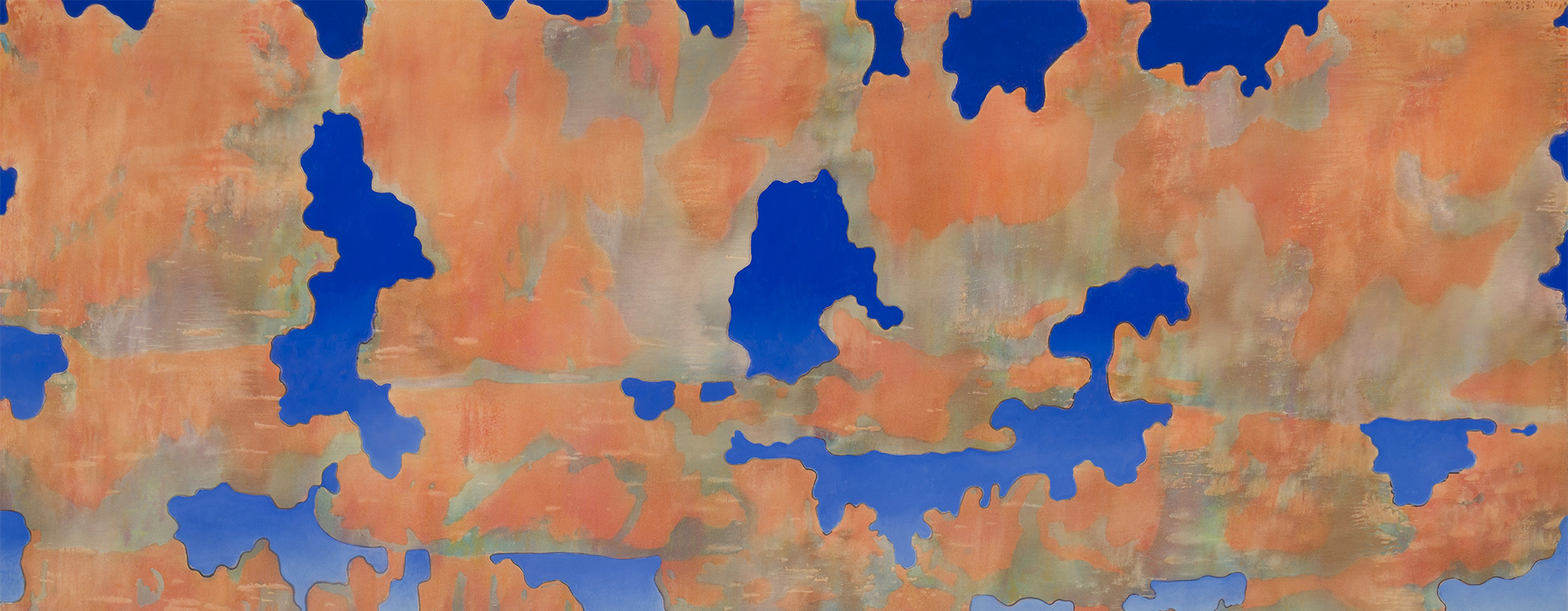Mere days before acclaimed environmental journalist Jeff Goodell picks up the phone to talk about the Blanton Museum of Art’s If the Sky Were Orange: Art in the Time of Climate Change, a special exhibition running Sept. 9, 2023—Feb. 11, 2024, the skies along the East Coast actually do turn orange. Residual smoke from the Canadian wildfires cast the Northeast, from New York City down to Chicago and Detroit, in an eerily auburn haze, the result of longer wavelengths from smoke particles bouncing around the atmosphere while also creating some of the worst air quality in the world.
Co-curated with Carter E. Foster, the Blanton’s curator of prints and drawings, the two-part exhibition also draws its name from Aaron Morse’s Cloud World (#3), a 2014 painting with neon orange clouds blotting a stark blue sky above roiling seas. This anxiety over climate change is nothing new, Goodell says. His seventh book on the topic is about to be released, and he has covered climate change for more than two decades for Rolling Stone. But this exhibition is a chance to combine words with images, science with art, pairing his writings and those from nine of his colleagues with arresting pieces from 10 contemporary artists.
“Carter asked me to go back through the museum’s collection and reinterpret a number of their pieces in the context of climate change,” says Goodell. “He pulled several hundred pieces that he thought I might find interesting—works not done with climate change in mind, but that nonetheless represent and echo the theme—and I narrowed it down to about 35-40 from the museum’s permanent collection to write about.”
“I’m very excited to reach a new audience and provoke them to think about energy and climate change,” Goodell says, “To see it not as an economic issue or a partisan or religious one, but as part of this larger story about our relationship with nature.”
For his first exhibition ever, Goodell reached out to fellow writers and experts in the field. Among those contributing their words are Elizabeth Kolbert, who won the Pulitzer Prize in 2015 for her book The Sixth Extinction, and Julian Brave NoiseCat, a member of the 2021 Time100Next list for his advocacy. On the artist side are such names as Cannupa Hanska Luger, the New Mexico-based artist behind the Mirror Shield Project protesting the Dakota access pipeline, and Sandra M. Sawatzky, who gained fame for her 220-foot tapestry charting the long, frustrating, and often violent history of oil.
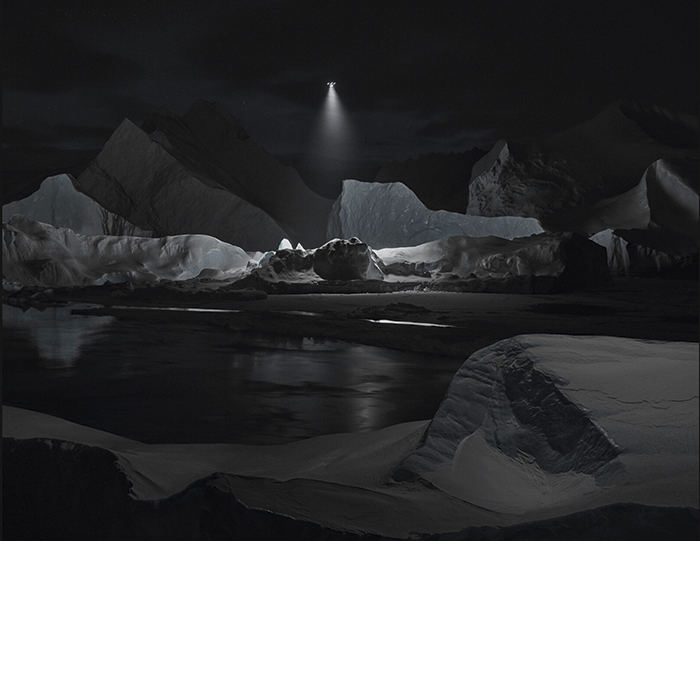
1 ⁄8
Julian Charrière, Towards No Earthly Pole, 2019, 4k color film, 104:30 min, Courtesy of the artist and Sean Kelly Gallery
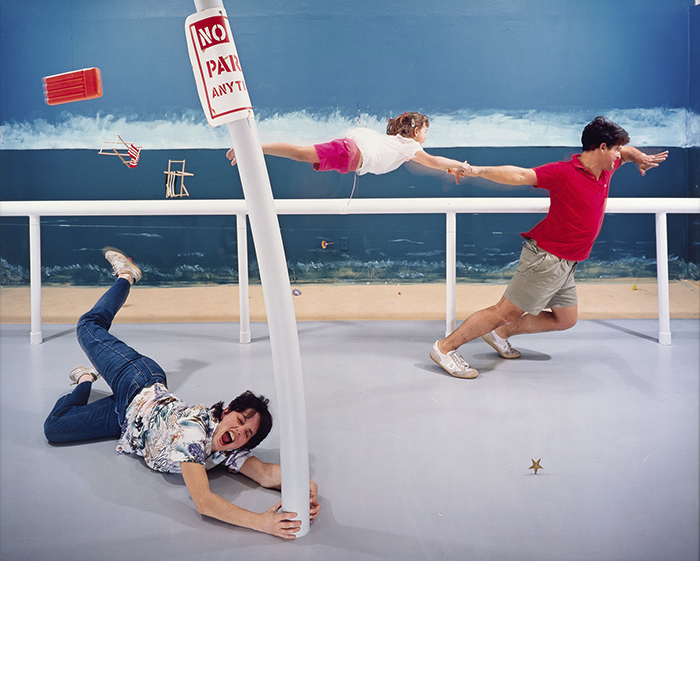
2 ⁄8
Nic Nicosia, Near (modern) Disaster #8, 1983, cibachrome print, 39 1/4 x 49 1/4 in., Blanton Museum of Art, The University of Texas at Austin, Gift of Fredericka Hunter and Ian Glennie in honor of Annette DiMeo Carlozzi, 2014
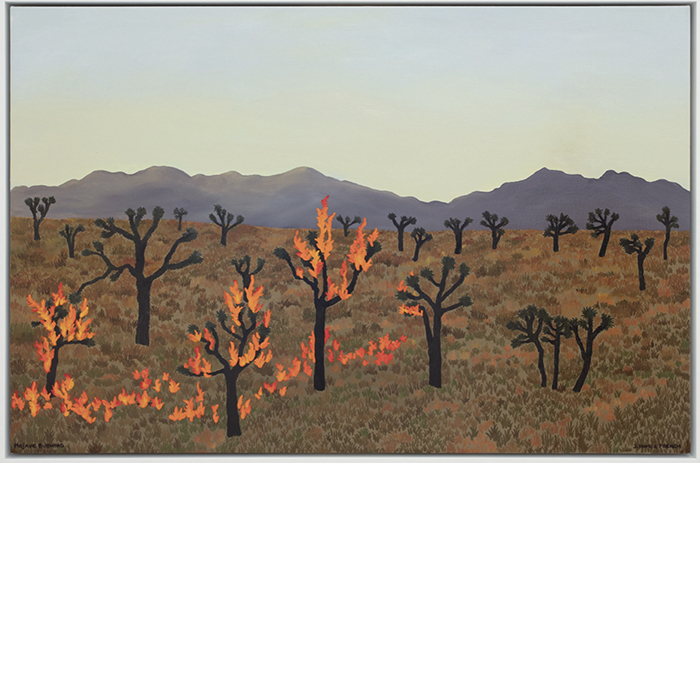
3 ⁄8
Jessie Homer French, Mojave Burning, 2021, oil on canvas, 24 x 36 in., Courtesy of the artist and Various Small Fires
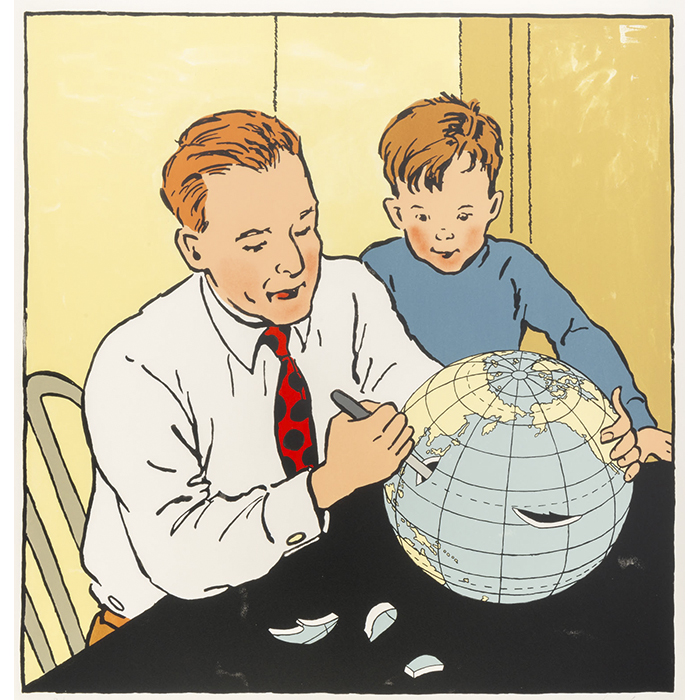
4 ⁄8
Vernon Fisher, Man Cutting Globe, 1995, color lithograph, 28 x 36 in., Blanton Museum of Art, The University of Texas at Austin, Bequest of John A. Robertson, 2017
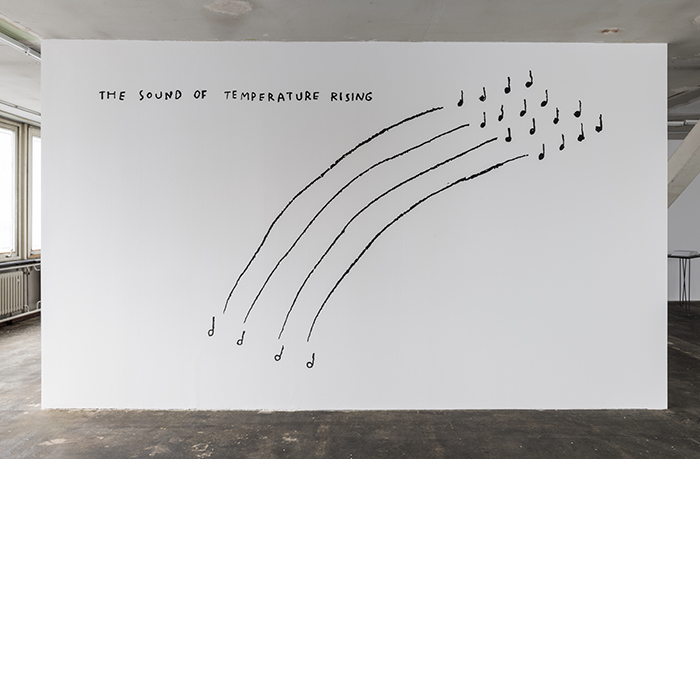
5 ⁄8
Christine Sun Kim, The Sound of Temperature Rising, acrylic on wall adapted from charcoal paper drawing, Courtesy of the artist and François Ghebaly

6 ⁄8
Robert Cottingham, Hot, 1973, seventeen-color lithograph, 22 15/16 x 22 13/16, Blanton Museum of Art, The University of Texas at Austin, Archer M. Huntington Museum Fund, 1974
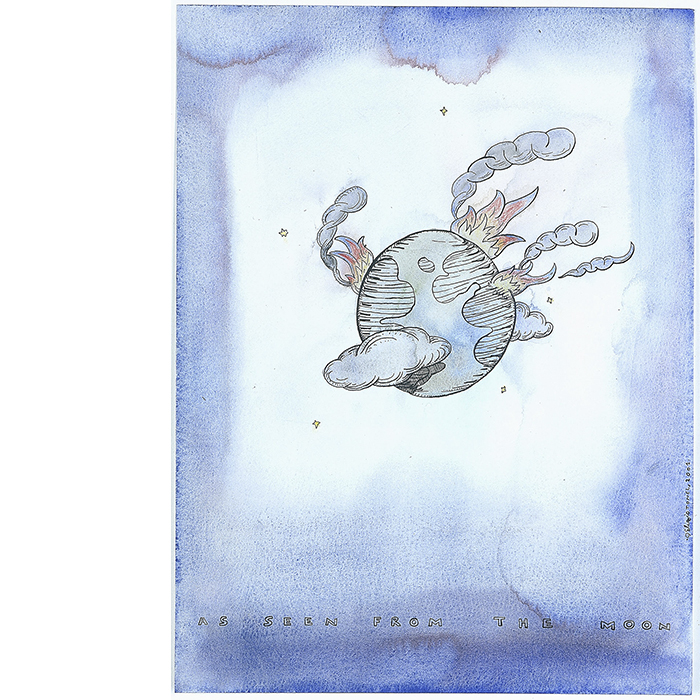
7 ⁄8
Tonel, As Seen from the Moon, 2001, watercolor and ink on paper, 16 x 12 in, Blanton Museum of Art, The University of Texas at Austin, Gift of Fran Magee and Gallery 106, 2003
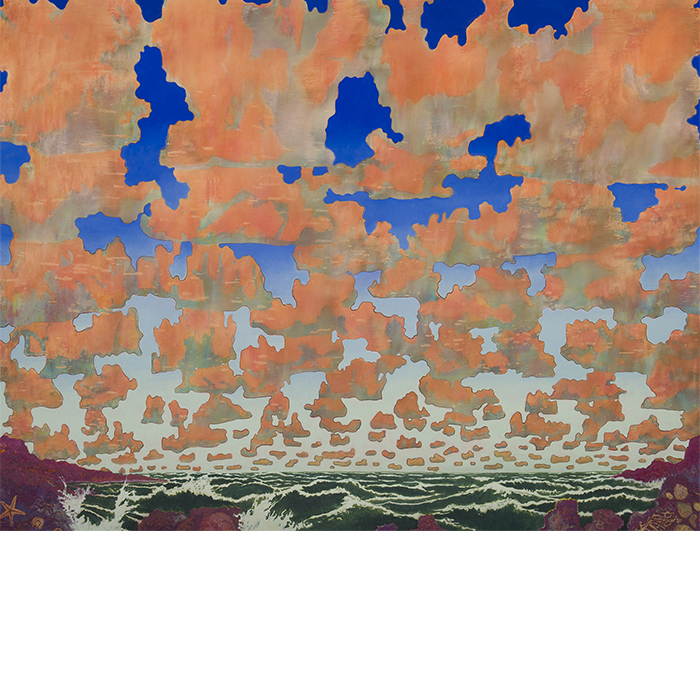
8 ⁄8
Aaron Morse, Cloud World (#3), 2014, acrylic on canvas, 29 x 118 in., Blanton Museum of Art, The University of Texas at Austin, Gift of Portia Hein and Philip Martin, 2015
“As we’re seeing with the current heat wave, plus a large coast that battles storm surges, hurricanes, and rising sea levels, Texas is very vulnerable to climate change,” Goodell says. “The idea is to help people understand the idea of climate change and our relationship with nature didn’t happen six weeks or even 10 years ago. How we think about these things is as old as humanity.”
—LINDSEY WILSON

